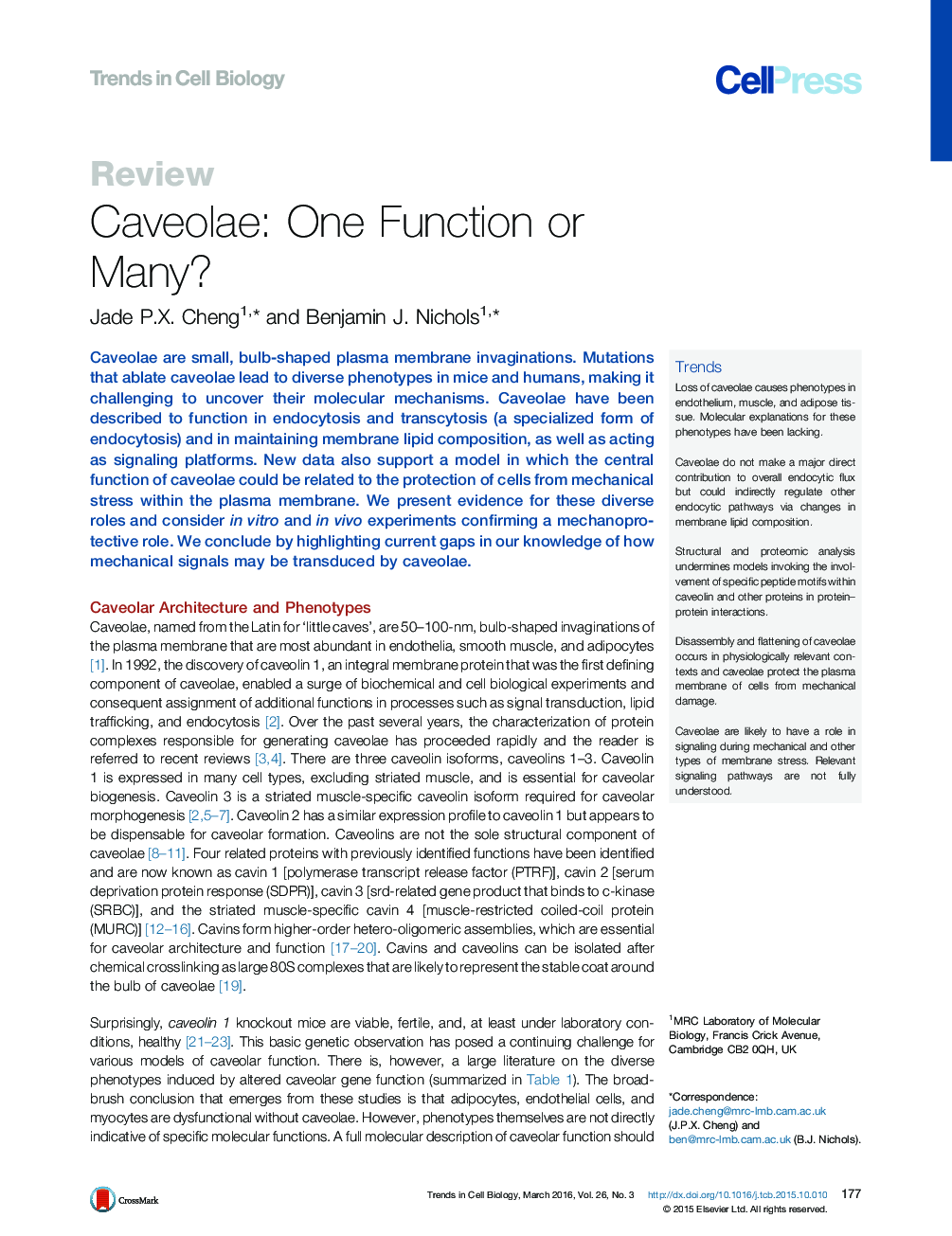| Article ID | Journal | Published Year | Pages | File Type |
|---|---|---|---|---|
| 2204344 | Trends in Cell Biology | 2016 | 13 Pages |
Caveolae are small, bulb-shaped plasma membrane invaginations. Mutations that ablate caveolae lead to diverse phenotypes in mice and humans, making it challenging to uncover their molecular mechanisms. Caveolae have been described to function in endocytosis and transcytosis (a specialized form of endocytosis) and in maintaining membrane lipid composition, as well as acting as signaling platforms. New data also support a model in which the central function of caveolae could be related to the protection of cells from mechanical stress within the plasma membrane. We present evidence for these diverse roles and consider in vitro and in vivo experiments confirming a mechanoprotective role. We conclude by highlighting current gaps in our knowledge of how mechanical signals may be transduced by caveolae.
TrendsLoss of caveolae causes phenotypes in endothelium, muscle, and adipose tissue. Molecular explanations for these phenotypes have been lacking.Caveolae do not make a major direct contribution to overall endocytic flux but could indirectly regulate other endocytic pathways via changes in membrane lipid composition.Structural and proteomic analysis undermines models invoking the involvement of specific peptide motifs within caveolin and other proteins in protein–protein interactions.Disassembly and flattening of caveolae occurs in physiologically relevant contexts and caveolae protect the plasma membrane of cells from mechanical damage.Caveolae are likely to have a role in signaling during mechanical and other types of membrane stress. Relevant signaling pathways are not fully understood.
